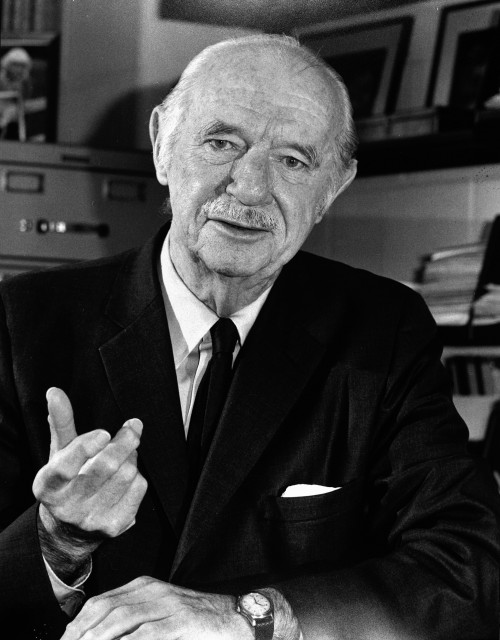Vincent Du Vigneaud
1901-1978

Du Vigneaud is best known for determining the structures of and synthesizing oxytocin and vasopressin, for which he received the 1955 Nobel Prize in Chemistry. Oxytocin is a cyclic octapeptide containing a disulfide bond. It is the principal uterus-contracting and lactation-stimulating hormone of the posterior pituitary gland. Its synthesis was the first of its kind, and was carried out by the "brute force" methods prior to the solid-phase technique invented by Merrifield (see portrait), hence represented a major advance in biochemistry. Vasopressin is a similar cyclic octapeptide, an antidiuretic hormone.
Du Vigneaud carried out research on other sulfur-containing biologically important molecules, including insulin, biotin and penicillin, as well as on the biological processes of transmethylation by choline, and transsulfuration. Du Vigneaud, who published nearly 500 research papers, summarized his major work in the 1952 book "A Trail of Research in Sulfur Chemistry and Metabolism, and Related Fields".
Du Vigneaud was born in Chicago and took his B.S. and M.A. degrees at the University of Illinois. After several jobs needed to raise money for his further education he obtained the Ph.D. at the University of Rochester (1927), then did post-doctoral research at Johns Hopkins. After several years on the staff at Illinois and at the George Washington University School of Medicine he joined the faculty at Cornell University Medical College (1938), where he remained until retirement. Du Vigneaud was a member of the National Academy of Sciences and, in addition to the Nobel, received honorary doctorates and the Mead Johnson Award and Mendel Award of the American Institute of Nutrition.
Sponsor: Robert H. Digby, MD
Location in chemistry building: Fifth Floor; West Wing North Wall; Sequence 5
Source: Cornell University Archives